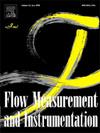Research on flow and pressure pulsation optimization of roller piston pump with triangular damping groove
IF 2.7
3区 工程技术
Q2 ENGINEERING, MECHANICAL
引用次数: 0
Abstract
The roller piston pump uses rolling bearings to replace the sliding friction pairs of the axial piston pump, which significantly improves working efficiency and widens the applicable speed range. Flow and pressure pulsations are critical factors affecting the vibration and noise of roller piston pumps. To achieve low-noise stable operation, this paper proposes an optimization strategy using triangular damping grooves for pulsation suppression. Since reverse flow directly affects the amplitude of pressure pulsation, this paper first establishes an analytical model of the backflow before and after optimization, and compares and analyzes the effect of the triangular damping groove on reducing backflow. Secondly, CFD numerical simulations are conducted to analyze the pressure and flow changes in the piston chamber before and after optimization. The results showed that at 3000 rpm/5 MPa, the flow pulsation rate decreased from 23.4 % to 11.1 %, and the pressure pulsation rate decreased from 9.8 % to 4.2 %. At 5000 rpm/5 MPa, the flow pulsation rate decreased from 22.1 % to 9.9 %, and the pressure pulsation rate decreased from 10.6 % to 7.4 %. The optimized distribution grooves significantly reduced pulsation levels by suppressing backflow. Finally, a dedicated test bench is constructed to validate the results. The experiments demonstrated that at 3000 rpm/5 MPa, the pressure pulsation rate decreased from 11.2 % to 5.3 %, and at 5000 rpm/5 MPa, it decreased from 11.9 % to 6.8 %. The experimental results are in good agreement with the CFD simulations, confirming the effectiveness of the triangular damping groove optimization and the accuracy of the numerical simulations. This study provides theoretical foundations and practical engineering guidance for the design of low-pulsation roller piston pump.
三角形阻尼槽滚柱塞泵流量与压力脉动优化研究
滚子柱塞泵采用滚动轴承代替轴向柱塞泵的滑动摩擦副,显著提高了工作效率,拓宽了适用转速范围。流量和压力脉动是影响柱塞泵振动和噪声的关键因素。为了实现低噪声的稳定运行,本文提出了一种利用三角形阻尼槽进行脉冲抑制的优化策略。由于回流直接影响压力脉动的幅值,本文首先建立了优化前后回流的解析模型,对比分析了三角形阻尼槽减少回流的效果。其次,通过CFD数值模拟分析了优化前后活塞腔内压力和流量的变化。结果表明,在3000 rpm/5 MPa时,流量脉动率从23.4%下降到11.1%,压力脉动率从9.8%下降到4.2%。在5000rpm / 5mpa时,流量脉动率从22.1%下降到9.9%,压力脉动率从10.6%下降到7.4%。优化后的分布槽通过抑制回流显著降低了脉动水平。最后,搭建了一个专用的试验台对实验结果进行验证。实验表明,在3000 rpm/5 MPa时,压力脉动率从11.2%下降到5.3%,在5000 rpm/5 MPa时,压力脉动率从11.9%下降到6.8%。实验结果与CFD仿真结果吻合较好,验证了三角阻尼槽优化的有效性和数值模拟的准确性。该研究为低脉动滚柱塞泵的设计提供了理论基础和实际工程指导。
本文章由计算机程序翻译,如有差异,请以英文原文为准。
求助全文
约1分钟内获得全文
求助全文
来源期刊

Flow Measurement and Instrumentation
工程技术-工程:机械
CiteScore
4.30
自引率
13.60%
发文量
123
审稿时长
6 months
期刊介绍:
Flow Measurement and Instrumentation is dedicated to disseminating the latest research results on all aspects of flow measurement, in both closed conduits and open channels. The design of flow measurement systems involves a wide variety of multidisciplinary activities including modelling the flow sensor, the fluid flow and the sensor/fluid interactions through the use of computation techniques; the development of advanced transducer systems and their associated signal processing and the laboratory and field assessment of the overall system under ideal and disturbed conditions.
FMI is the essential forum for critical information exchange, and contributions are particularly encouraged in the following areas of interest:
Modelling: the application of mathematical and computational modelling to the interaction of fluid dynamics with flowmeters, including flowmeter behaviour, improved flowmeter design and installation problems. Application of CAD/CAE techniques to flowmeter modelling are eligible.
Design and development: the detailed design of the flowmeter head and/or signal processing aspects of novel flowmeters. Emphasis is given to papers identifying new sensor configurations, multisensor flow measurement systems, non-intrusive flow metering techniques and the application of microelectronic techniques in smart or intelligent systems.
Calibration techniques: including descriptions of new or existing calibration facilities and techniques, calibration data from different flowmeter types, and calibration intercomparison data from different laboratories.
Installation effect data: dealing with the effects of non-ideal flow conditions on flowmeters. Papers combining a theoretical understanding of flowmeter behaviour with experimental work are particularly welcome.
 求助内容:
求助内容: 应助结果提醒方式:
应助结果提醒方式:


